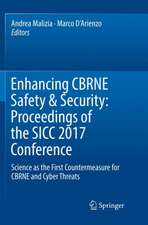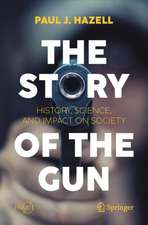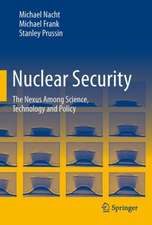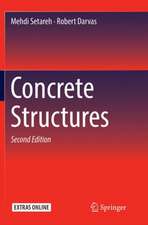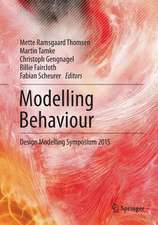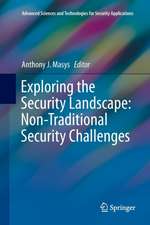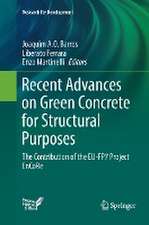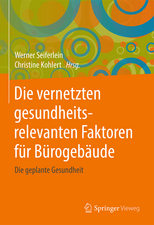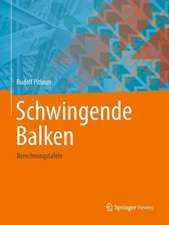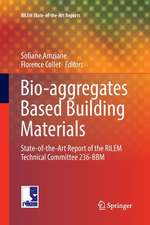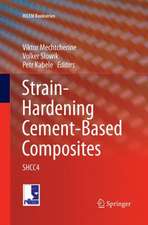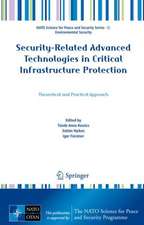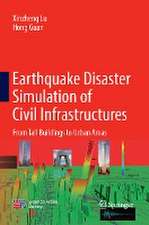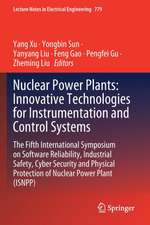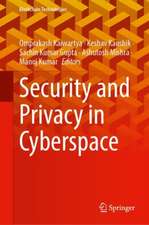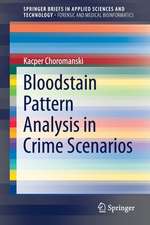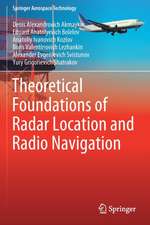Magnetic Resonance Detection of Explosives and Illicit Materials: NATO Science for Peace and Security Series B: Physics and Biophysics
Editat de Tomaž Apih, Bulat Rameev, Georgy Mozzhukhin, Jamie Barrasen Limba Engleză Paperback – 16 oct 2013
| Toate formatele și edițiile | Preț | Express |
|---|---|---|
| Paperback (1) | 942.44 lei 6-8 săpt. | |
| SPRINGER NETHERLANDS – 16 oct 2013 | 942.44 lei 6-8 săpt. | |
| Hardback (1) | 944.99 lei 6-8 săpt. | |
| SPRINGER NETHERLANDS – 11 oct 2013 | 944.99 lei 6-8 săpt. |
Din seria NATO Science for Peace and Security Series B: Physics and Biophysics
- 18%
 Preț: 955.25 lei
Preț: 955.25 lei - 18%
 Preț: 1222.62 lei
Preț: 1222.62 lei - 24%
 Preț: 1057.17 lei
Preț: 1057.17 lei - 24%
 Preț: 788.31 lei
Preț: 788.31 lei - 18%
 Preț: 1223.74 lei
Preț: 1223.74 lei - 18%
 Preț: 1830.34 lei
Preț: 1830.34 lei - 15%
 Preț: 643.99 lei
Preț: 643.99 lei - 18%
 Preț: 1212.36 lei
Preț: 1212.36 lei - 18%
 Preț: 947.85 lei
Preț: 947.85 lei - 18%
 Preț: 950.52 lei
Preț: 950.52 lei - 20%
 Preț: 565.64 lei
Preț: 565.64 lei - 18%
 Preț: 950.66 lei
Preț: 950.66 lei - 24%
 Preț: 1060.06 lei
Preț: 1060.06 lei - 5%
 Preț: 1412.06 lei
Preț: 1412.06 lei - 18%
 Preț: 1226.90 lei
Preț: 1226.90 lei - 18%
 Preț: 945.79 lei
Preț: 945.79 lei - 18%
 Preț: 1221.20 lei
Preț: 1221.20 lei - 24%
 Preț: 789.61 lei
Preț: 789.61 lei - 18%
 Preț: 947.67 lei
Preț: 947.67 lei - 24%
 Preț: 1053.41 lei
Preț: 1053.41 lei - 18%
 Preț: 1834.77 lei
Preț: 1834.77 lei - 18%
 Preț: 943.08 lei
Preț: 943.08 lei - 15%
 Preț: 640.06 lei
Preț: 640.06 lei - 18%
 Preț: 945.30 lei
Preț: 945.30 lei - 18%
 Preț: 1217.62 lei
Preț: 1217.62 lei - 18%
 Preț: 951.14 lei
Preț: 951.14 lei - 18%
 Preț: 1216.02 lei
Preț: 1216.02 lei - 18%
 Preț: 1839.17 lei
Preț: 1839.17 lei - 15%
 Preț: 645.47 lei
Preț: 645.47 lei - 18%
 Preț: 1220.57 lei
Preț: 1220.57 lei - 18%
 Preț: 1217.90 lei
Preț: 1217.90 lei - 18%
 Preț: 1228.96 lei
Preț: 1228.96 lei - 18%
 Preț: 1232.71 lei
Preț: 1232.71 lei - 15%
 Preț: 652.17 lei
Preț: 652.17 lei - 18%
 Preț: 1220.88 lei
Preț: 1220.88 lei - 15%
 Preț: 639.73 lei
Preț: 639.73 lei - 18%
 Preț: 1224.36 lei
Preț: 1224.36 lei - 18%
 Preț: 1828.29 lei
Preț: 1828.29 lei
Preț: 942.44 lei
Preț vechi: 1149.32 lei
-18% Nou
Puncte Express: 1414
Preț estimativ în valută:
180.36€ • 195.84$ • 151.50£
180.36€ • 195.84$ • 151.50£
Carte tipărită la comandă
Livrare economică 22 aprilie-06 mai
Preluare comenzi: 021 569.72.76
Specificații
ISBN-13: 9789400772670
ISBN-10: 940077267X
Pagini: 180
Ilustrații: X, 168 p. 84 illus., 50 illus. in color.
Dimensiuni: 155 x 235 x 9 mm
Greutate: 0.36 kg
Ediția:2014
Editura: SPRINGER NETHERLANDS
Colecția Springer
Seria NATO Science for Peace and Security Series B: Physics and Biophysics
Locul publicării:Dordrecht, Netherlands
ISBN-10: 940077267X
Pagini: 180
Ilustrații: X, 168 p. 84 illus., 50 illus. in color.
Dimensiuni: 155 x 235 x 9 mm
Greutate: 0.36 kg
Ediția:2014
Editura: SPRINGER NETHERLANDS
Colecția Springer
Seria NATO Science for Peace and Security Series B: Physics and Biophysics
Locul publicării:Dordrecht, Netherlands
Public țintă
GraduateCuprins
Part 1 Nuclear Quadrupole Resonance Detection of Solids.- Further improvement of NQR technique for detection of illicit substances.- An Overview of NQR Signal Detection Algorithms.- Nuclear Quadrupole Resonance of Pantaerythritol Tetranitrate (PETN) in Different Compositions.- Cross-relaxation enhanced NQR of ammonium nitrate in low magnetic field.- Investigating homonuclear broadening in NQR with Carr-Purcell Meiboom-Gill performed on p-chloroaniline.- Size Effect in 14N Nuclear Quadrupole Resonance Spectroscopy.- NQR Detection of Sodium Nitrite Recrystallized in Wood.- Part 2 Nuclear Magnetic Resonance Detection of Liquids.- Bottled Liquid Scanner for Security Checkpoints.- MagViz: A Bottled Liquids Scanner Using Ultra-low field NMR Relaxometry.- Multiparameter NMR Identification of Liquid Substances.- NMR-Based Liquid Explosives Detector: Advantages and Disadvantages of Different Configurations.- Composite Pulses in Inhomogeneous Field NMR.- Part 3 Other Techniques.- Novel HTS DC Squid Solutions For NMR Applications.- Passive Sub THz Imaging.
Textul de pe ultima copertă
Detection of concealed explosives is a notoriously difficult problem, and many different approaches have been proposed to solve this problem. Nuclear quadrupole resonance (NQR) is unique in many ways. It operates in a safe AM radio frequency range, and it can remotely detect unique “fingerprint” (NQR spectrum) of many explosives, such as TNT or RDX. As such, the detection of target does not depend on the shape or material of the container, or the presence of metallic object such as triggers etc. Spectra of chemically similar compounds differ enough that their presence never causes interference or false alarms. Unfortunately, widespread use is prevented due to low sensitivity, radiofrequency interference from the noisy environment, and inability to detect liquid explosives. This book presents current state of the art of the attempts to overcome NQR sensitivity problem, either by increasing the strengths of signals generated, or by increasing the specificity of the technique through a better understanding of the factors that affect the quadrupolar parameters of specific explosives. The use of these specific quadrupolar parameters is demonstrated on signal processing techniques that can detect weak signals, which are hidden in a noisy background. The problem of differentiation of liquid explosives and benign liquids in closed containers is approached by measurements of different nuclear magnetic resonance (NMR) parameters. As shown, a couple of solutions has reached a prototype stage and could find their use in a near future.
Caracteristici
Covers both detection of solid explosives by NQR and liquid explosives by NMR Comprehensive review of recent progress and opened problems Progress in 14N nuclear quadrupole resonance techniques


